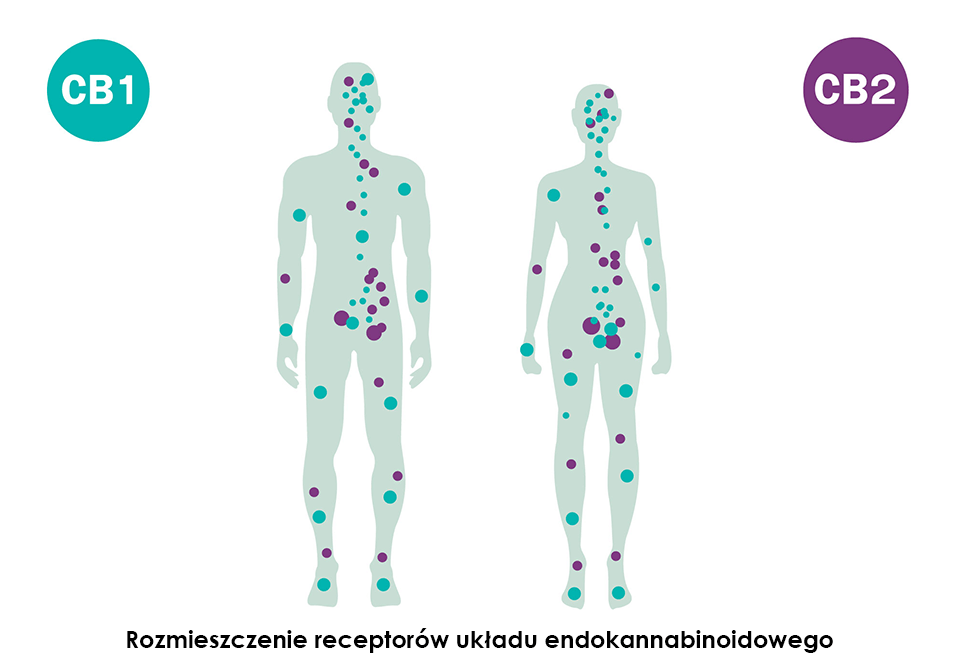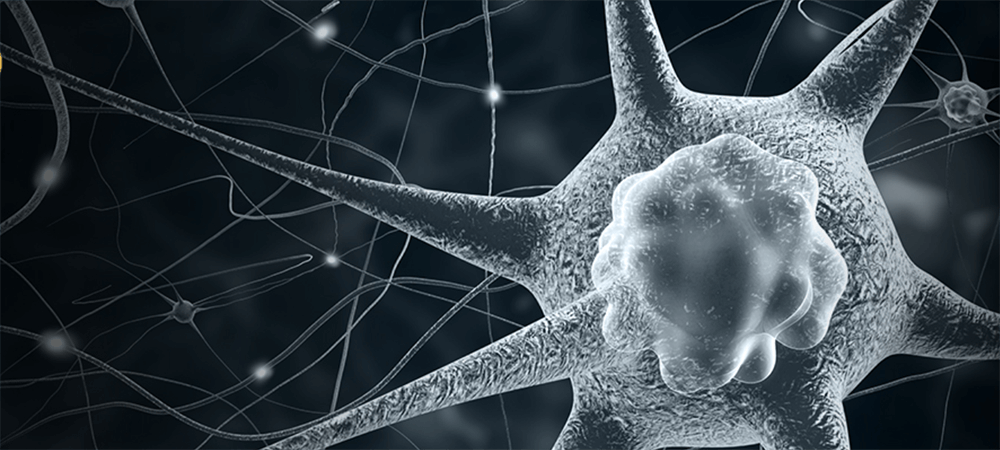What we know about the endocannabinoid system
The basic question to be answered at the outset is: what is the endocannabinoid system?
With help, it is traditional to refer to the definition of the term:
| The endocannabinoid system integrates physiological functions related to the body's response to disease and injury, and maintains and restores a state of homeostasis and an overall sense of well-being, emotional balance and physical and mental health for the individual.
Despite the fact that the system (I use the terms system and endocannabinoid system interchangeably) was discovered as early as 1992, it is still difficult to find information about it in school or even academic textbooks. Despite the existence of an enormous mass of peer-reviewed scientific studies - there is even talk of 1 new study a day (sic!) in the last 20 years in which the endocannabinoid system has been addressed - almost no medical school teaches students, future doctors, about how this key system for health works.
The keyword "endocannabinoid" typed into the search engine of the scientific medical research library Pubmed indicates as of 12.06.2020 as many as 10256 scientific studies addressing the endocannabinoid system. In the peak year 2016, there were as many as 819 such studies, and in 2020 alone there are already 467. This is a lot, or even a lot.

Endocannabinoid synthesis (formation) is the body's adaptive response to cellular stress also known as oxidative stress.
Its task is to restore homeostasis at the cellular level. Homeostasis is a balance, a physiological, emotional, mental equilibrium. Something that is good, everyone wants to have, but in today's contaminated world it is increasingly difficult to achieve, with gigantic social and health costs for almost the entire human population. Homeostasis is peace and broad-based health.
The endocannabinoid system is believed to be the bridge between the physical body and the human mind.
The endocannabinoid system regulates and is primarily responsible for:
- immunity and the quality and intensity of the body's immune response to disorders and pathogens
- ability to learn, memorise, concentrate and focus
- regulation of appetite and gluttony, i.e. proper functioning of the digestive system
- decisiveness, decisiveness and critical thinking
- emotional balance and stress management
- sensory and motor responses to external stimuli
- maintaining balance on every level of life - mental, intellectual, physical
- regulation of blood pressure and body temperature
- proper functioning and protection of the nervous system
- proper functioning of human cells (protection against cancer, elimination of cancer cells and inhibition of tumour growth)
History of endocannabinoid discovery
As early as 2000 BC, the cannabis plant (cannabis) was described in China, but it was not until 1964 that scientists succeeded in isolating one of the main cannabinoids from cannabis - the psychoactive THC. In 1988, the first receptors of the endocannabinoid system were discovered, and as early as 1992, a team of scientists led by the Prof Raphael Mechoulam discovered the existence of the endogenous cannabinoids anandamide and 2-AG. It became clear that we were dealing with a scientific discovery that was pioneering and revolutionary in nature. The existence of an internal endocannabinoid system 'fed' by the chemical compounds produced by the body was unequivocally confirmed.
Cannabinoid receptors CB1 and CB2

Curiosity:
| Cannabinoid receptors wyewoluowały aż 600 milionów lat temu, a receptory obecne u żachwy (takie zwierzę morskie z podtypu osłonic 🙂 ) są niemal identyczne z receptorami współczesnego człowieka.
There are two types of cannabinoid receptors: CB1 and CB2.
CB1 receptors are located in the central nervous system, testes and uterus, adipose tissue, connective tissue, glands, leukocytes, spleen, heart, liver and gastrointestinal tract.
CB2 receptors are located on the surface of monocytes, macrophages, B (beta) cells, T cells (a recently discovered type of lymphocyte able to kill certain types of cancer cells) and in the liver, tonsils, spleen, as well as in both - central and enteric - nervous systems. They are primarily, but not exclusively, present in the immune system. Interestingly, these receptors can arise in places where they are not normally found. This happens when there is inflammation or at sites of injury/damage to tissue or organs.
The receptors activate different types of G-proteins.
Which type of G protein is activated depends on the type of activator (agonist), which will bind to the receptor. Receptors will have different functions depending on the activator.
| Figuratively speaking: many keys open the same lock, but each opens the door to a different room.
It's a bit like in the movies when the same door opened twice in a row leads to two different places.
Endocannabinoids - what are they and what do we know about them?

Endocannabinoids are molecules that the body produces to stimulate the receptors of the endocannabinoid system. Their synthesis occurs as and when required, on demand.
The two main endocannabinoids that we already know quite well are Anandamide and 2-AG.
There are also other endocannabinoids such as Noladin and Vidoramin, whose mechanism of action is still being studied by scientists.
Endocannabinoids also modulate the function of other receptors such as GPR55, TRPV1 (capsaicin receptor) or PPARs. CBD, among others, can bind to these receptors, as I have already written about in an article: What is cannabidiol (CBD)
The production of endocannabinoids has the task of maintaining homeostasis in the body. Homeostasis is a state of complete balance and equilibrium of all relevant physiological functions of the body.
Plant cannabinoids such as CBD, CBG, CBN or THC contained in hemp are the most perfect natural 'replacements' for endocannabinoids. Hence, the supplementation function of preparations such as cbd oil in situations where the body, for various reasons, is unable to produce sufficient endocannabinoids to ensure body homeostasis.
In simple terms:
| Endocannabinoids (anandamide, 2-AG) and their plant-based substitutes or cannabinoids (CBD, CBG, CBDa, CBN, THC) are the keys to the locks (receptors), which can have a stimulating or inhibiting effect depending on the need. For example, pain, muscle spasticity and anxiety are suppressed thanks to them, while appetite and a general feeling of wellbeing are stimulated.
Knowledge to date suggests that:
- The main, but not the only, role of the endocannabinoid system is to maintain cellular homestasis
- The endocannabinoid system is present throughout the body, organs, tissues and on the surface of cells
- Our knowledge of the endocannabinoid system is not complete, and the mechnizm of how the system works is unprecedentedly complex
- Modulation of the endocannabinoid system can be an important therapeutic tool for many diseases and dysfunctions
The topic is not exhausted. In subsequent articles, I will explain the functions and regulatory mechanisms of the endocannabinoid system in various tissues, organs and functional areas of the human body.
Other sources:
www.themedicalcannabisinstitute.org
https://www.ncbi.nlm.nih.gov/pmc/articles/PMC3997295
You can find disclaimers regarding the content published on the pages of the knowledge base by clicking here. All information contained in the article is verified, true and reliable. They are primarily derived from knowledge gained during a training course for practising physicians on the functioning of the endocannabinoid system conducted by the renowned US training body specialising in the use of cannabinoids for therapeutic, medical and quality of life purposes TMCI Global Institute.